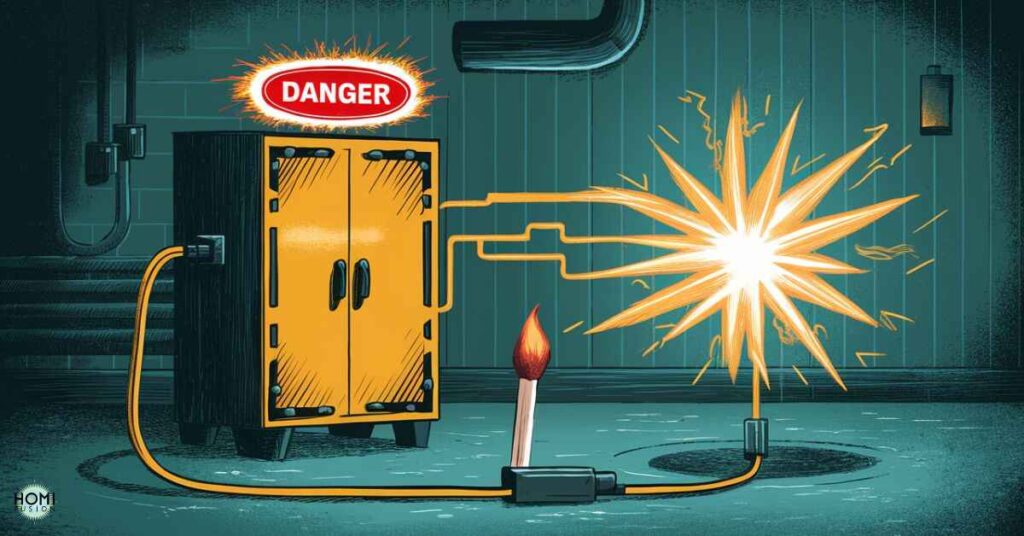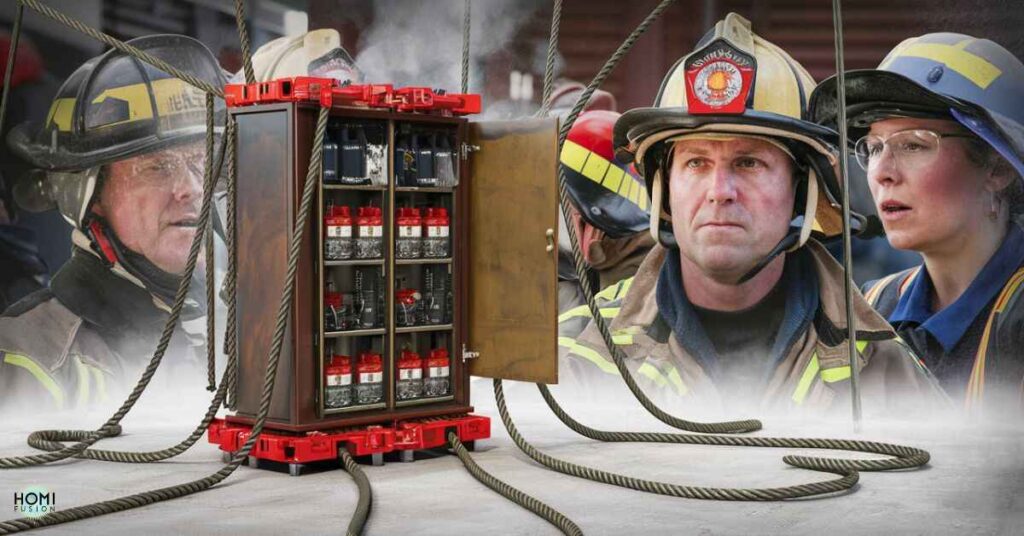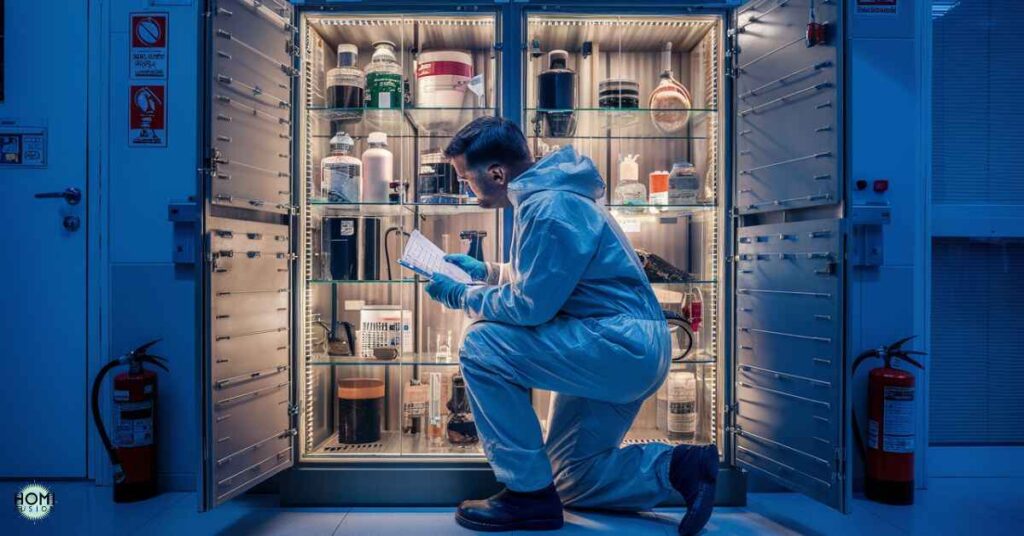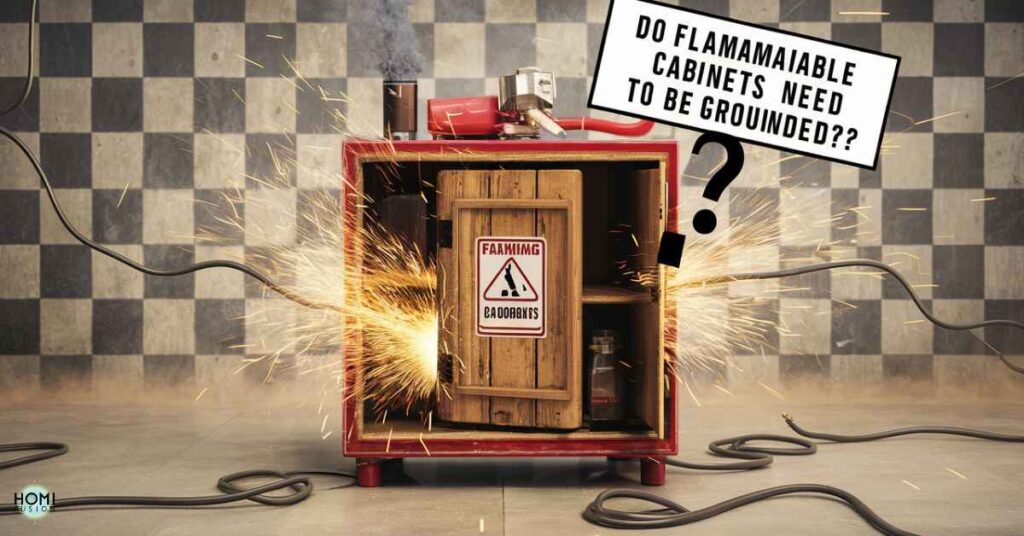Storing flammable liquids can be a risky endeavor if not done properly. While you may have invested in a top-notch flammable storage cabinet, have you considered grounding it?
Skipping this crucial step could put your workplace at risk of fires or explosions. In this article, we’ll dive deep into the importance of grounding flammable cabinets, exploring regulations, best practices, and step-by-step instructions to ensure maximum safety.
Understanding Flammable Cabinet Grounding Regulations
When it comes to storing flammable and combustible liquids, there are several regulations and standards that govern safe practices. The National Fire Protection Association (NFPA) 30: Flammable and Combustible Liquids Code provides guidance on grounding flammable cabinets, although it doesn’t explicitly require it.
However, the Occupational Safety and Health Administration (OSHA) strongly recommends grounding these cabinets to dissipate static electricity and prevent ignition hazards.
In the United Kingdom, the Dangerous Substances and Explosive Atmospheres Regulations (DSEAR) 2002 outline the risks associated with flammable substances and the necessary precautions to protect employees and others. While grounding isn’t mandated, it’s considered a best practice for maximizing safety.
Why Grounding is Crucial for Safety

The primary reason for grounding flammable cabinets is to prevent the buildup of static electricity, which can potentially ignite flammable vapors or liquids. Static charges can accumulate from various sources, such as the movement of liquids or the friction between materials. If left unchecked, these charges can discharge in the form of a spark, potentially igniting any flammable substances present.
A tragic example of the consequences of improper grounding occurred in 2008, when a static spark ignited fumes during a gasoline transfer. This resulted in an explosion that killed four people and injured seven others. Incidents like these underscore the importance of implementing proper grounding techniques to dissipate static charges and mitigate the risk of fires or explosions.
Step-by-Step Guide to Grounding Your Flammable Cabinet
Even if not strictly required by regulations, grounding your flammable storage cabinet is a highly recommended practice. Not only does it enhance safety, but it also provides added convenience and peace of mind. This is especially important when dispensing or transferring flammable liquids within the cabinet.
Preparing for the Grounding Process
Before you begin, gather the necessary tools and materials:
- Grounding wire (typically a flexible, insulated copper wire)
- Nut driver or wrench (usually 8mm)
- Grounding rod or connection to a building’s grounding system
Additionally, follow these safety precautions:
- Ensure the cabinet is empty and free of any flammable liquids or vapors.
- Wear appropriate personal protective equipment (PPE), such as gloves and safety glasses.
- Follow the manufacturer’s instructions carefully.
The Grounding Steps
- Locate the grounding screw/lug: Most flammable storage cabinets are equipped with a grounding screw or lug, typically located on the bottom or side of the cabinet.
- Attach the grounding wire: Using the nut driver or wrench, loosen the grounding screw and securely attach one end of the grounding wire.
- Connect to a grounding rod/system: Route the other end of the grounding wire to a proper grounding rod or connect it to your building’s grounding system.
- Test the grounding connection: Use a continuity tester or multimeter to ensure a continuous electrical path exists between the cabinet and the ground.
- (Optional) Consider bonding techniques: If you plan to dispense or transfer flammable liquids within the cabinet, it’s recommended to implement bonding techniques. This involves connecting conductive containers or equipment to the grounded cabinet, ensuring a continuous path for static charges to dissipate.
Maintenance and Inspections
Grounding connections should be inspected regularly to ensure their integrity and effectiveness. If the cabinet is moved or modified, it’s essential to re-check the grounding and make any necessary adjustments. Proper maintenance can help prevent potential hazards and ensure ongoing safety.
Situations That Necessitate Grounding a Flammable Cabinet
While grounding a flammable storage cabinet is generally recommended, there are certain situations where it becomes an absolute necessity:

- Dispensing or transferring flammable liquids: Any time you’re pouring, pumping, or otherwise transferring flammable liquids within the cabinet, grounding is crucial to prevent static discharge and potential ignition.
- High static electricity risk: Environments with low humidity or other factors that increase the risk of static buildup may warrant grounding as an added precaution.
- Handling volatile or reactive substances: Certain flammable materials may be particularly volatile or reactive, making grounding an essential safety measure.
- Manufacturer’s recommendations: Always follow the manufacturer’s guidance, as they may have specific recommendations or requirements for grounding their cabinets.
- Workplace hazard assessments: If your risk assessments identify grounding as a necessary control measure, it’s important to implement it accordingly.
Even if none of these situations apply, grounding your flammable cabinet can provide added convenience and peace of mind. By taking this proactive step, you can potentially prevent incidents and associated costs, making it a worthwhile investment in workplace safety.
Maximizing Safety with Flammable Cabinets
Grounding is just one aspect of ensuring the safe storage and handling of flammable liquids. To maximize safety, consider the following additional factors:
Proper Ventilation and Airflow
Flammable storage cabinets should be placed in well-ventilated areas to prevent the accumulation of hazardous fumes. Many cabinets come with plugged fittings that allow for exhaust ventilation if needed, particularly for toxic or noxious materials.
Seismic Protection
In earthquake-prone regions, it’s essential to secure your flammable cabinet to prevent toppling during seismic events. Seismic bracket kits allow you to mount the cabinet to the floor or wall without compromising its double-walled design.
Correct Storage and Segregation
Incompatible materials must be stored separately to prevent dangerous reactions. Follow proper segregation guidelines and clearly label all containers within the cabinet.
Regular Inspections and Maintenance

Conduct regular inspections of your flammable storage cabinets to ensure they are in good working condition. Address any signs of damage, leaks, or other issues promptly.
Training and Awareness
Educate your employees on the proper handling of flammable liquids, including the importance of grounding and other safety measures. Clear labeling and safety signage can reinforce a culture of hazard awareness in the workplace.
Frequently asked questions
Does OSHA require grounding of flammable cabinets?
OSHA does not explicitly require grounding of flammable cabinets, but it is recommended for safety.
Do flammable cabinets need to be earthed?
Flammable cabinets do not need to be earthed, but grounding can enhance safety during the handling of flammable liquids.
What are the requirements for a flammable cabinet?
Flammable cabinets must be constructed to limit internal temperatures and labeled clearly with warnings.
What is the grounding system in NFPA?
The NFPA grounding system involves connecting metal parts to the ground to prevent static electricity buildup.
What are the NFPA requirements for flammable storage rooms?
NFPA requires flammable storage rooms to have proper ventilation, fire-resistant construction, and spill containment measures.
What’s the difference between bonding and grounding?
Bonding connects two conductive objects together to equalize voltage, while grounding connects an object to the earth to dissipate electrical charges safely.
Conclusion
Grounding flammable storage cabinets is a critical step in mitigating the risks associated with storing and handling flammable liquids. By following regulations, best practices, and the step-by-step grounding process outlined in this article, you can enhance workplace safety and prevent potentially devastating incidents.
Remember, while grounding may not always be strictly required by regulations, it provides an added layer of protection and peace of mind. Consult professionals if you have any doubts or need assistance in properly grounding your flammable cabinet.
Prioritizing workplace safety and regulatory compliance is not only a legal obligation but also a ethical responsibility. By taking proactive measures like grounding flammable cabinets, you can create a safer environment for your employees and protect your business from potential liabilities.







